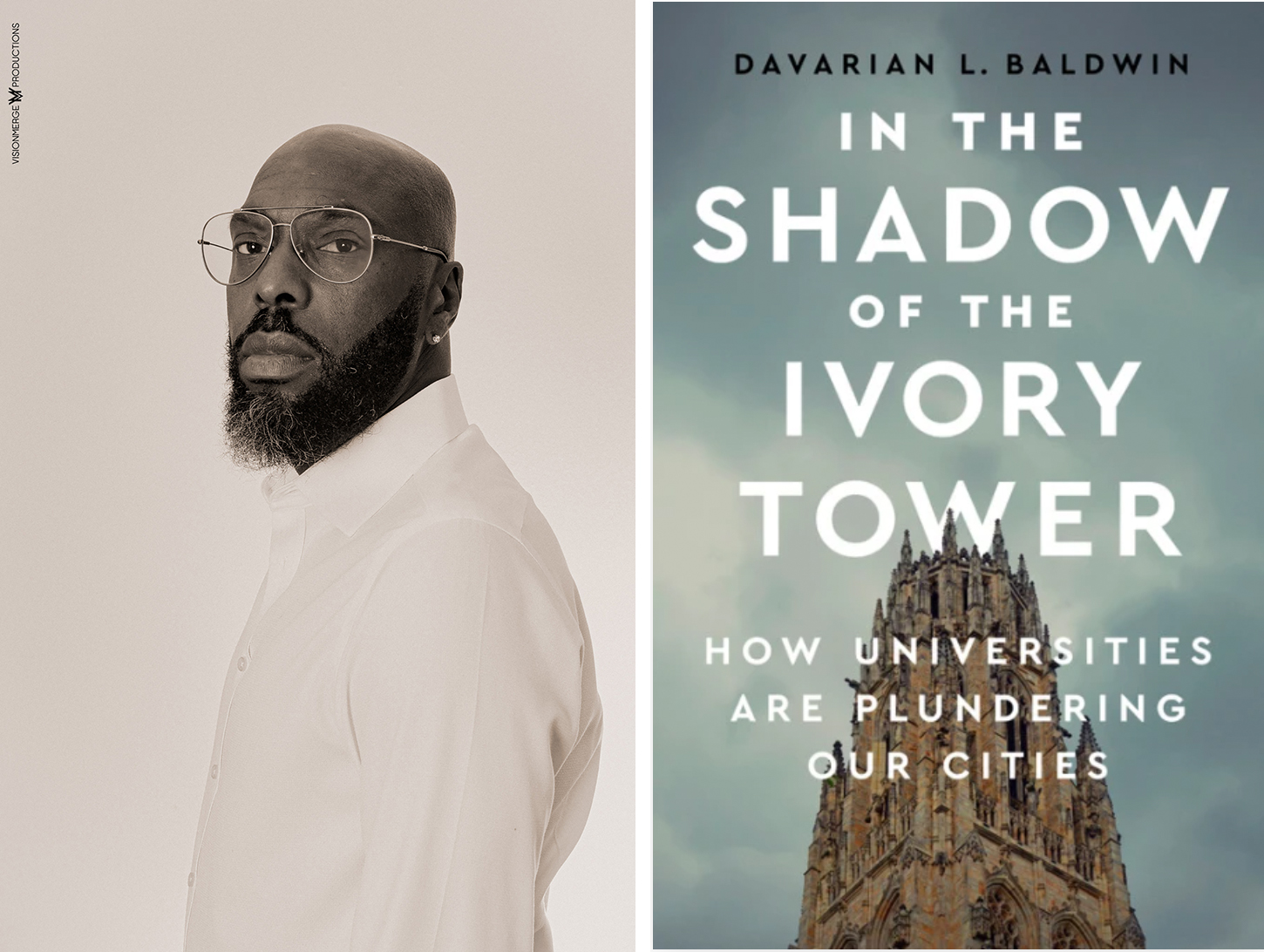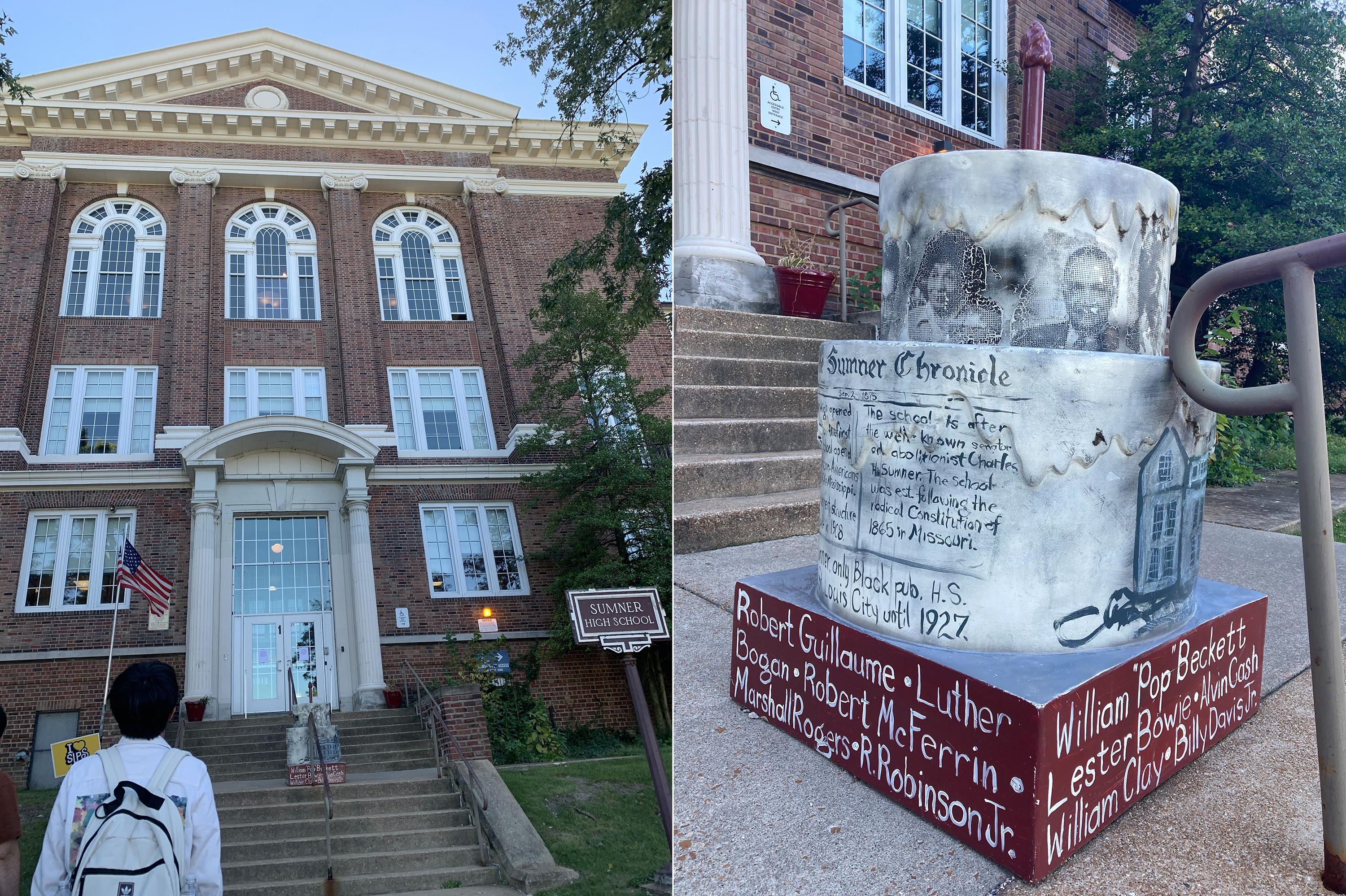Michael R. Allen, a lecturer in the American Culture Studies program and senior lecturer in architecture, landscape architecture and urban design at the Sam Fox School of Design and Visual Arts, is also an academic researcher, historian, design critic, public artist, critical spatial tour guide and heritage conservationist in private practice.

RECORDING AVAILABLE
What Good Is Higher Education for Our Cities?
4 pm | Thursday, February 23, 2023
Davarian L. Baldwin is a leading urbanist, historian, and cultural critic. He currently serves as the Paul E. Raether Distinguished Professor of American Studies and founding director of the Smart Cities Research Lab at Trinity College (CT).
“Be careful what you wish for” goes the axiom. If true, then I should be the most careful person in the world right now. As a scholar who came to academia through a community-immersed public practice, after nearly nine years of teaching at Washington University in St. Louis, I now am teaching university courses out in a city neighborhood. Since last semester, I have been teaching WashU students in a community hub located at Sumner High School as part of The Divided City’s Sumner Studiolab. Last semester, it was historic preservation; this semester, it’s power, politics and urban design. As Sumner alums and local organizations like 4theVille will testify, Sumner High School is the heart of The Ville, a historic Black neighborhood in North St. Louis with a rich legacy in culture, business and education. Working with community members in The Ville neighborhood at a public school, I have well-supported means of connecting my courses to public life, and to adjacent initiatives including the targeted involvement of the city’s economic development agency.
I should rejoice, but instead, I am being careful. Very careful.
For one thing, there is no positive model for a major research university’s engagement of a historically Black neighborhood through the oldest Black high school west of the Mississippi River. Davarian L. Baldwin offers a cogent critique of university-led social engagement through In the Shadow of the Ivory Tower: How Universities Are Plundering Our Cities, reminding us that “publish or perish” has a problematic parallel in “partner or perish” relationships with neighborhoods. As Baldwin narrates, we see community partnerships largely serving opportunities for universities to appropriate cultural authenticity, community desire for change and real estate. Although legally nonprofit, universities are arrangements of private capital whose interests in universities often are the roles in which universities play in generating capital opportunities. You can’t always look at what faculty members do to judge a university’s intentions.

Strikingly, Baldwin reminds us that the era of diversity, equity and inclusion in higher education is more reactionary than revolutionary. Universities are adapting to popular demands while maintaining the sanctity of their discrete, private interests. While some reform has been achieved in increasing financial aid and tuition waivers, fundamentally universities are loathe to cede real power to either mass movements or local community activists. Instead, they pose as allies in order to divert popular demands and maintain what bell hooks termed the dominator culture. Private universities like WashU resist calls to pay basic land taxes into public school districts, and fight efforts to tax endowments, while they fund faculty members calling for racial and social justice.
When it comes to my courses in The Ville, I must think about a specific sentence in Baldwin’s book: “These neighboring communities of color frequently sit in zones of relatively cheap and sometimes divested land, while holding little political influence.” After years of deprivation, The Ville is depopulated and depleted (in terms of buildings), and land has little economic value. Sumner High School’s cultural value represents one of the few places to initiate capital accumulation in The Ville. The focus on the high school as site of untapped market potential, instead of the neighborhood as a complex social organism that may reject the university’s involvement, does trouble me.
When I mentioned the Sumner Studiolab to friends in The Ville and surrounding neighborhoods, I confronted the question of “Does Washington University want to buy Sumner High School?” This question has gained traction as Washington University recently announced that it is buying several buildings in the Delmar Loop, including the Pin-Up Bowl. I have dutifully disavowed such intent, but I also am a non-tenure-track faculty member — a frontline laborer who has no role in governance or institutional planning. I want my courses to serve the neighborhood, and I want my students to benefit from the exchange in ways that are symmetrical. Alas, Baldwin shows us again and again how well-meaning intellectual projects can be exploited by university leaders interested mostly in power and capital.

I draw hope from Stefano Harney and Fred Moten’s theory of the “undercommons.” Harney and Moten would return Baldwin’s volley by stating that universities never were supposed to be anything but what Baldwin describes. However, Harney and Moten also remind those of us enmeshed in systems of power relations beyond our control that we can extract goods for social change from inside. Instead of lamenting the corrupt basis of the system, we can take material resources from within and deliver them to groups that have not previously been beneficiaries. There’s a “fugitive” role in the undercommons. Back to Baldwin, though, and the “fugitive” seems as much a scholar accepting unpaid immaterial labor as someone who is serving the town while working for the gown.
Perhaps part of being careful, though, is to accept that doing scholarly work in the community is always going to be incomplete, complicated and contradictory. The scholar in the community has an awesome opportunity to deliver goods to people who need them. Baldwin will remind us of how that opportunity carries great responsibility, and just maybe, great hope.
Headline image: Sumner Studiolab students look toward the National Geospatial-Intelligence Agency campus after visiting the nearby Griot Museum of Black History. Photo by Laura Perry.





